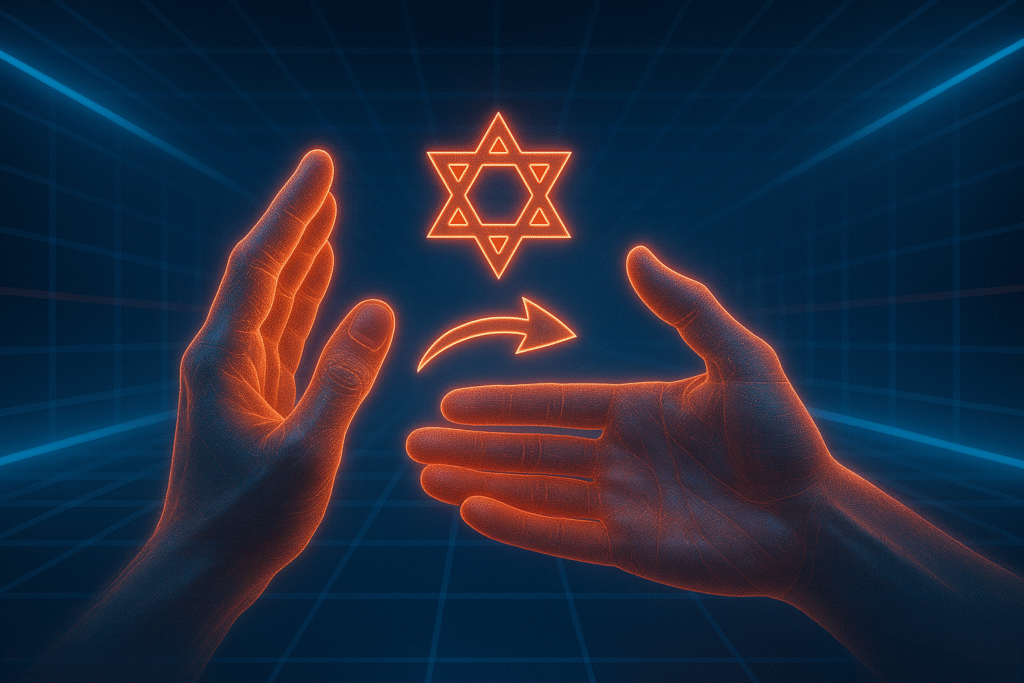Elena Morales, a 42-year-old historian from Buenos Aires, spent her childhood and early adulthood with no awareness of her Jewish roots. Raised in a nominally Catholic household that practiced few religious traditions, she grew up assuming her family’s occasionally unusual customs were simply Argentine eccentricities—their avoidance of pork, the strange Friday evening ritual where her grandmother would light candles behind closed curtains, and the unfamiliar melodies her grandmother would sometimes hum that differed from typical Catholic hymns.
The revelation began with her grandmother Sofia’s declining health. As Elena helped organize her grandmother’s belongings, she discovered a hidden compartment in an antique desk containing extraordinary items: a silver candlestick with unusual engravings, a torn fragment of a document in Hebrew, a Star of David pendant wrapped in silk, and a faded photograph of what appeared to be a Jewish wedding from the 1920s.
When gently confronted, her 90-year-old grandmother shared a stunning family secret on her deathbed: they were descendants of Jews who had fled Eastern Europe in the 1930s. Upon arrival in Argentina, where antisemitism was prevalent in certain circles, Elena’s great-grandparents had outwardly converted to Catholicism while secretly maintaining some Jewish traditions. This concealment became so ingrained that Sofia’s own children—including Elena’s mother—were never explicitly told of their Jewish origins, though some practices were preserved as “family traditions” without explanation.
The revelation transformed Elena’s understanding of her identity. As a professional historian, she approached the challenge of documenting her Jewish heritage with academic rigor, despite extraordinary obstacles:
- No official birth or marriage certificates acknowledged her family’s Jewish identity
- The Holocaust had destroyed records from their region in Poland
- The forced conversion and decades of concealment eliminated traditional documentation
- Most relatives who might have confirmed the family’s background were deceased
- The deliberately cryptic nature of preserved traditions made them difficult to authenticate
Drawing on her professional expertise and working with Jewish genealogists, Elena undertook a comprehensive three-year investigation before applying for aliyah:
- Artifact Authentication
- Had the Hebrew document fragment professionally restored and analyzed, revealing it to be part of a ketubah (Jewish marriage contract) from Warsaw
- Submitted the silver candlestick for expert analysis, with metallurgists confirming its Eastern European Jewish origin circa 1890-1910
- Had the wedding photograph examined by costume historians who identified distinctly Jewish ceremonial elements
- Consulted with experts on hidden Jewish symbolism who identified coded Jewish references in family heirlooms
- Historical Records Research
- Located her great-grandparents’ names on a 1937 ship manifest from Gdansk to Buenos Aires
- Discovered their original surname had been altered upon arrival (from Moroshnik to Morales)
- Found her great-grandfather’s name in fragmentary records from a Warsaw synagogue
- Identified their names on a list of Jewish refugee families assisted by a relief organization in Argentina
- Located property records from Poland showing their family home in a predominantly Jewish neighborhood
- Genetic and Anthropological Evidence
- Underwent DNA testing revealing 68% Ashkenazi Jewish genetic markers
- Connected with previously unknown third cousins in Israel through DNA matching
- Worked with anthropologists to document family customs that aligned with secret Jewish practices maintained by other crypto-Jewish families
- Recorded and had analyzed the unusual melodies her grandmother sang, which musicologists identified as corrupted Shabbat songs
- Documented architectural features in her grandmother’s childhood home matching patterns found in other crypto-Jewish households
- Contemporary Reconnection
- Completed an intensive Jewish education program at a Buenos Aires synagogue
- Underwent a “return ceremony” with a rabbi specialized in working with descendants of crypto-Jews
- Began observing Jewish holidays and practices
- Connected with organizations focused on helping descendants of hidden Jews reclaim their heritage
- Documented her personal journey of Jewish reconnection through a scholarly memoir
Elena’s application was evaluated under the “Historical Continuity Despite Concealment” framework established in 2015. After a fourteen-month review including consultations with historical experts, the Ministry of Interior approved her aliyah, stating: “The applicant has presented extraordinary evidence reconstructing her Jewish lineage despite generations of forced concealment. The convergence of documentary fragments, genetic evidence, anthropological analysis, and expert authentication collectively establishes her Jewish ancestry with compelling certainty. Her academic approach to reclaiming her heritage demonstrates both the integrity of her claim and her deep commitment to Jewish reconnection.”
Elena successfully made aliyah in 2022 and settled in Jerusalem, where she works at Yad Vashem researching family histories fractured by persecution. She has connected with distant relatives identified through DNA matching and has become active in organizations helping others with similar backgrounds reclaim their heritage. Her case established that when historical persecution disrupts normal documentation channels, alternative forms of evidence can collectively establish Jewish lineage when analyzed with scholarly rigor.
